Have you ever wondered how to grow a native garden in shade? Here is a spectacular showcase of shady gardens, along with tips to consider in your design.
The annual cycle of sun and shade leads to design decisions
The longest day of the year on 21 December has passed. Shorter shadows cast from the overhead summer sun are lengthening as the sun’s trajectory drops toward the southern horizon.
This day by day transition occurs over the next five months. It causes the sun and shadow patterns across the garden to change and shaded areas move location. In addition some trees and shrubs will have grown taller and broader expanding the shaded areas in the garden.
Some plants suiting either sun or shade are now in less than ideal conditions and may need relocation. Possibly your initial garden design has been compromised. It may be necessary to consider new species as suitable replacements! However this offers the opportunity to establish other plants that were not suitable for the original conditions.
Successfully dealing with shade in gardens goes back to first principles. Here are a few tips to grow a native garden in shade.
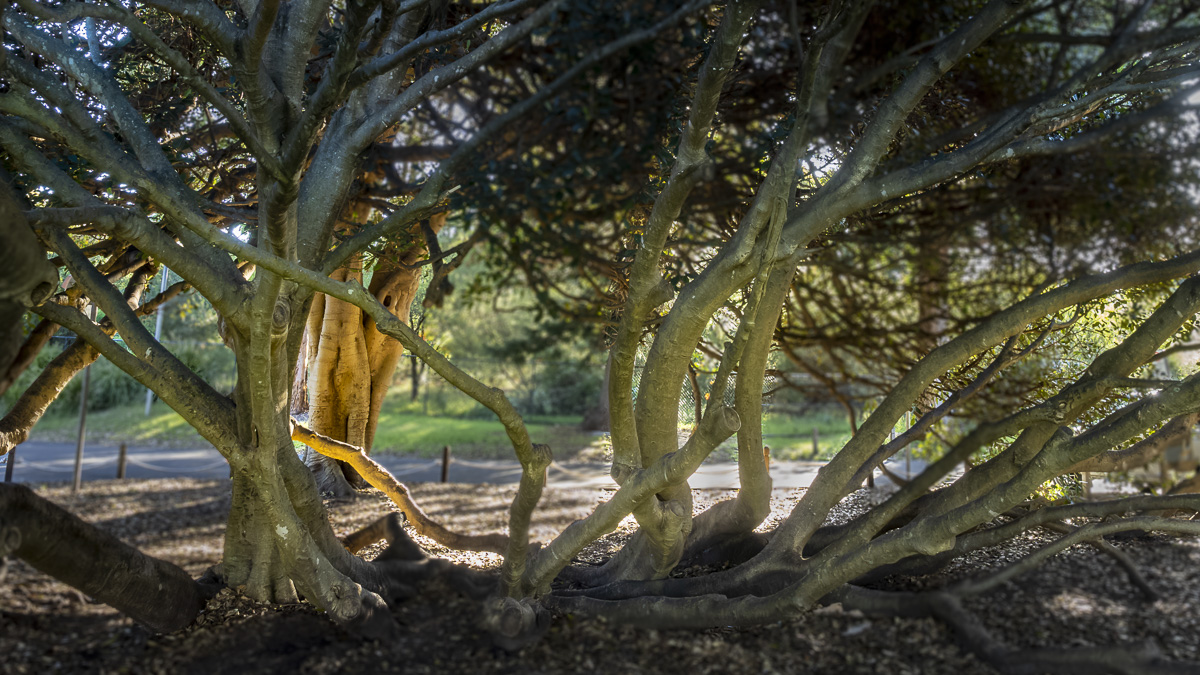
A few tips to consider
Latitude
Latitude has a large bearing on your design, whether tropical, temperate or anywhere in between.
As the sun moves from north to south, the angle of sun’s rays become progressively lower. This increases areas of shade cast from the house, other structures and of course growing trees.
North of the Tropic of Capricorn (e.g. Rockhampton and Longreach), there is minimal if any shade cast in summer on the south side of any obstruction. Whereas in say Tasmania, there are long periods of widely cast shadow over a southern aspect garden in most seasons. This impacts how to grow a native garden in the shade.
Listen to the plants
Many plants can tell you where they prefer to grow best by simple observation. There is always an exception. But a good rule to follow is that the size of the foliage generally indicates the amount of shade a plant will tolerate.
So very shady gardens generally have large luxuriant leaves to collect the minimal sunshine penetrating through the leaf canopy.
Control the Sun
Decide where and when you want the shadow to be cast then locate a tree in the correct position.
In our new small suburban garden, it was important to block the northwest summer sun from scorching the front garden. The sunshine analysis for the land defined the optimum location for a shade tree to allow morning sun into the garden but to cast its shadow over the front garden from early afternoon.
There was really only one position which would also allow the sun to warm the garden all day in the winter months when the tree shadow is cast over the house.
This design decision was an important one to successfully grow a native garden in shade.
Change over time
In any garden change over time is welcome and critical. As a garden matures the overall character of most will change substantially as plants grow, invariably developing greater areas and density of shade. These areas can become a limiting factor and/or an opportunity.
It is possible that I have created a bit of a monster in a parts of my new small garden. I have crowded some taller species more closely together than is desirable. But nature does that constantly in forest and rainforest particularly where plants compete for light by becoming tall and slender.
After four years of growth for many specimens, I have uppruned or removed all side branchlets to establish a canopy 1 – 2m above the garden surface. This allows the sun to penetrate under.
The pattern of multiple ‘naked’ stems and branches provides an attractive ‘transparent screen’. It allows many shade tolerant small shrubs, covers, ferns and tufting plants to form a mosaic garden carpet underneath – something that would have been impossible initially.
Subtropical shade garden
Several years ago I visited John and Liz Aitken’s garden in Bonnet Bay NSW and was impressed with its relationship with natural shade. The dramatic site slopes steeply down a southern exposed escarpment to the Woronora River. It is complete with a carefully created bush track, winding and stepping down the slope, under a tall canopy of mature trees like Angophora spp.

The shaded moist conditions are ideal for a collection of subtropical plants that love these conditions and thrive. I doubt that any section of this enticing sloping garden receives full sun at any time of the year.
What a wonderful framework it provides in the view to the waters far below. One can look through the tracery pattern of branches and foliage over the multiple understorey species that cover the ground. Truly a wonderful example of a garden design inspired and refined by nature through patterns of light and shade.
Cool Temperate Shade Garden
Similarly I have been inspired by the cool temperate gardens of Tasmania and Victoria. Here the shade, high rainfall and protected valleys have produced a completely different garden character to those of the subtropics and tropics.
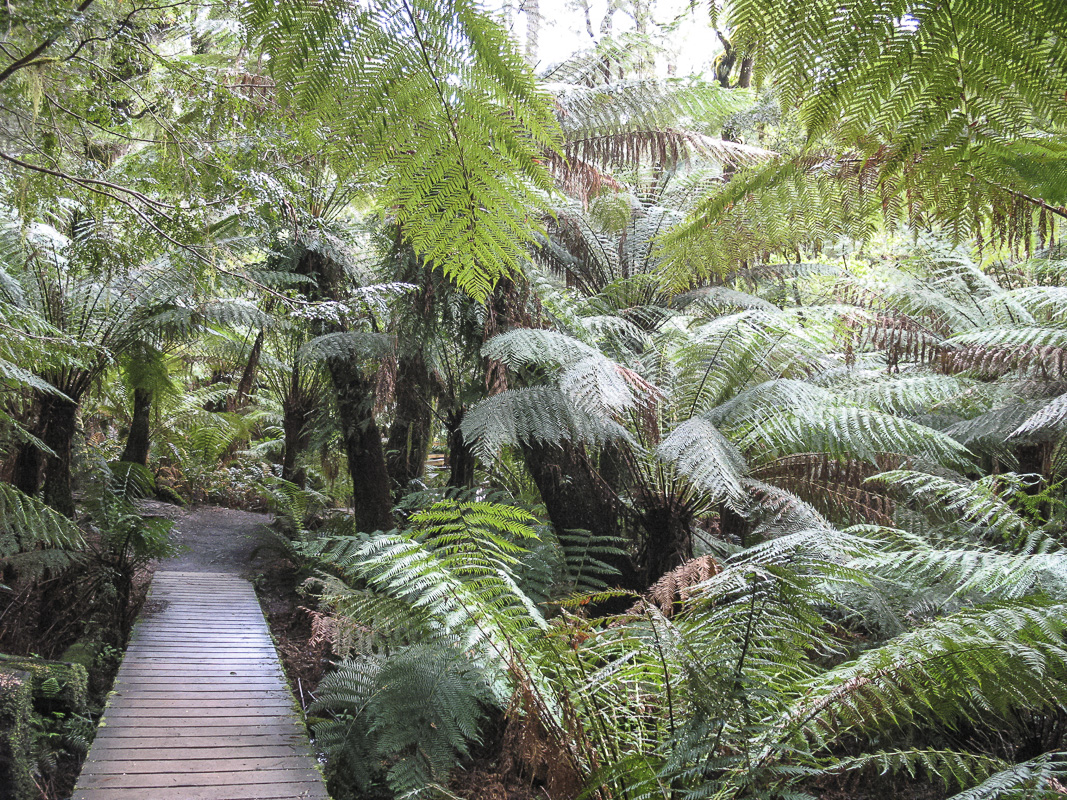
Dicksonia forest, Cape Otway, Victoria
Diverse plants for shade
Our continent is full of species diversity with each bioregion offering its own palette of plants. Each is ideally suited to the environments of a specific location.
In designing our gardens we are tempted to select plants from a very different climatic region. This is a major challenge for success. Species from elsewhere does add visual spice to a garden. But it is a trial and error situation where the research, successes and failures all contribute to our experience growing Australian flora.
Showcase of shady gardens
It is not often that you compare native gardens with each other and try to identify what links or separates them.
- All use Australian nativ plants. Irrespective of where they are located there is a visual similarity, even though the species used might be radically different.
- The tropical shade gardens and the temperate shade gardens are similar in character. The foliage is generally deep green and shiny, leaves are large or of distinctive form, basically for the same physiological reasons – capturing sunlight
- In most cases, the understory plants need to be regularly maintained and pruned to form, to preserve views under the trees. There are no formal or geometric gardens in this collection of images. Rather they illustrate a natural, informal association of plants. This is not to suggest that it would be impossible to create a shaded garden that is formal. However nature seems to prefer diversity, contrast and interest. This is probably not for aesthetic reasons, but rather to attract wildlife and ensure production of the next generation of plant species.
Snapshots of gardens and their design characteristics
Here is a snapshot of what they show about the use of shade in the their design.
NSW gardens
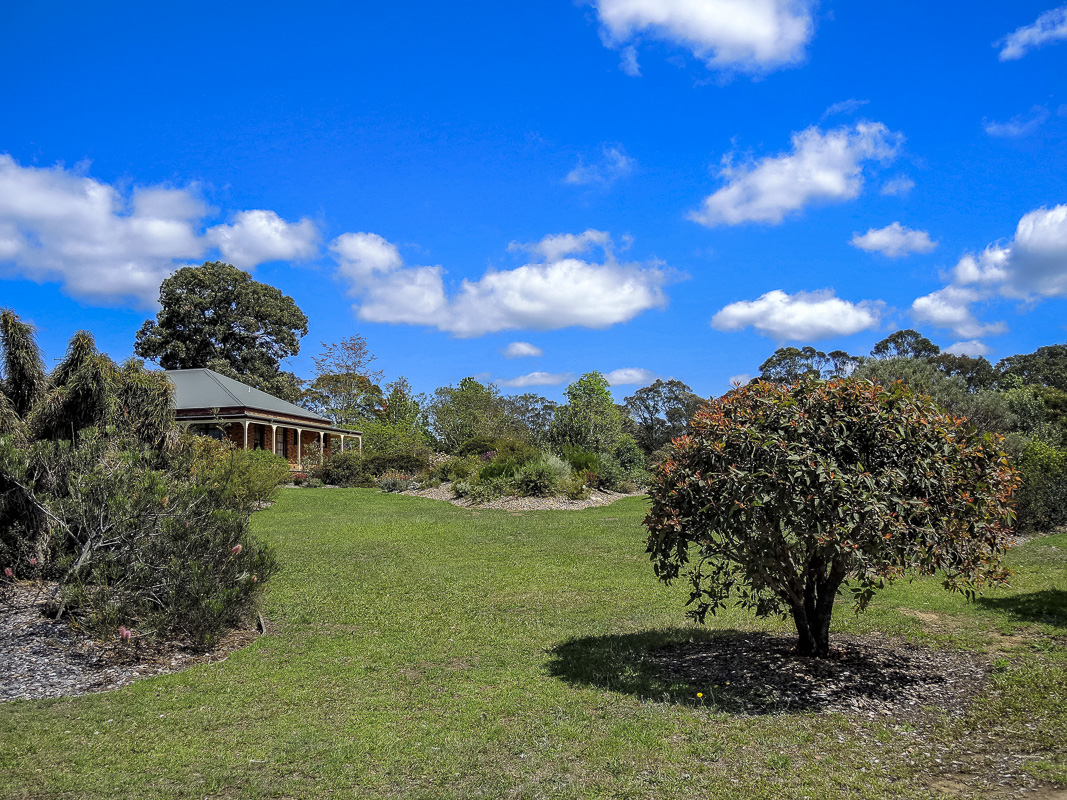
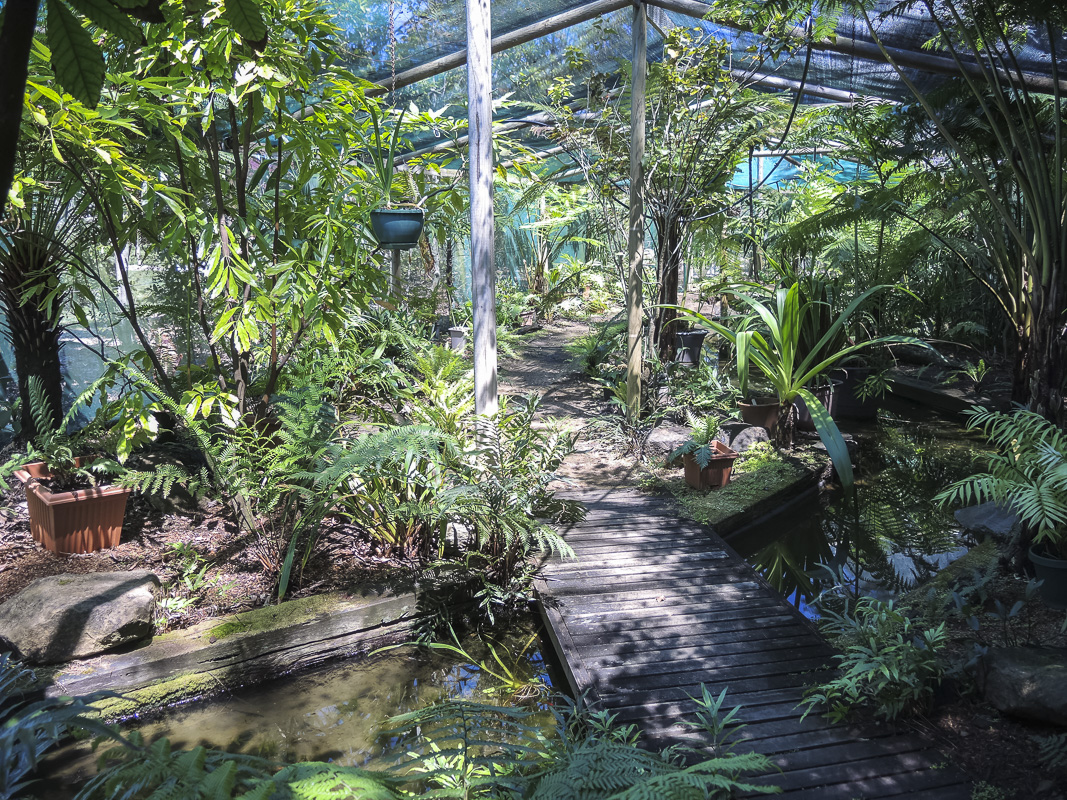
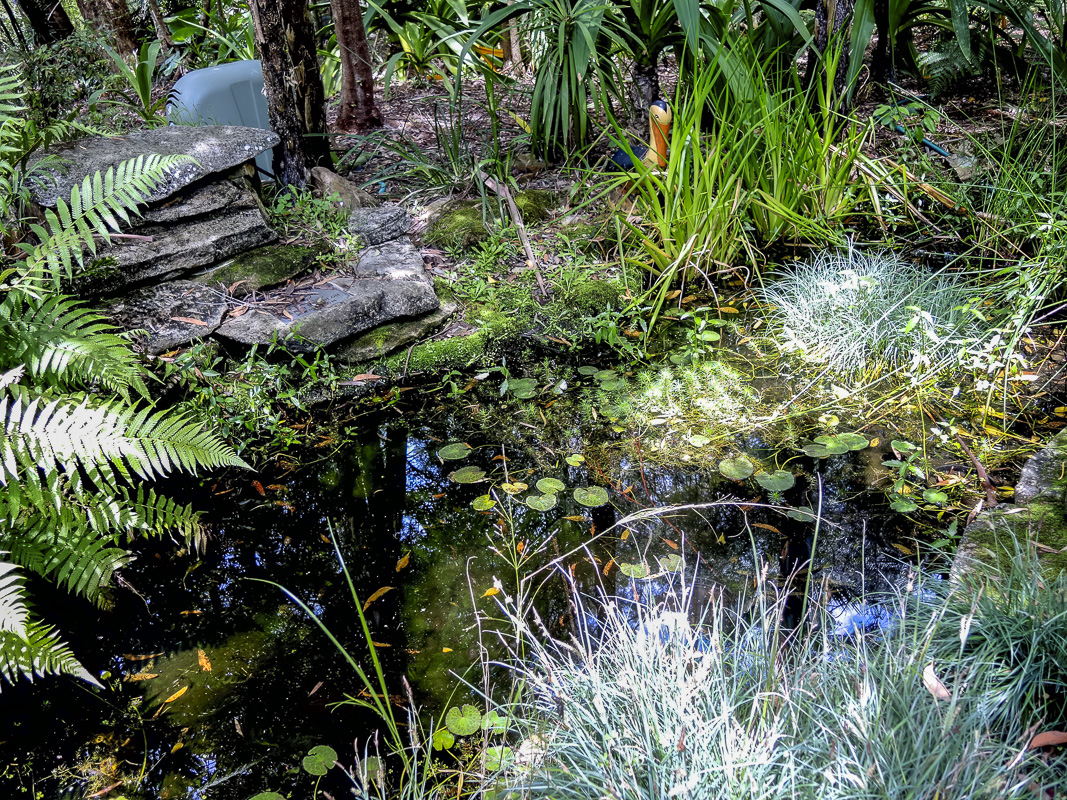
Sylvan Grove Garden in Sydney – takes advantage of a naturally protected moist valley and waterway. Displays shade tolerant, understorey and aquatic species

Joan Zande garden, Sydney – a sandstone escarpment and an open sunny aspect with dappled shade maximise colour and texture in garden display
Queensland gardens
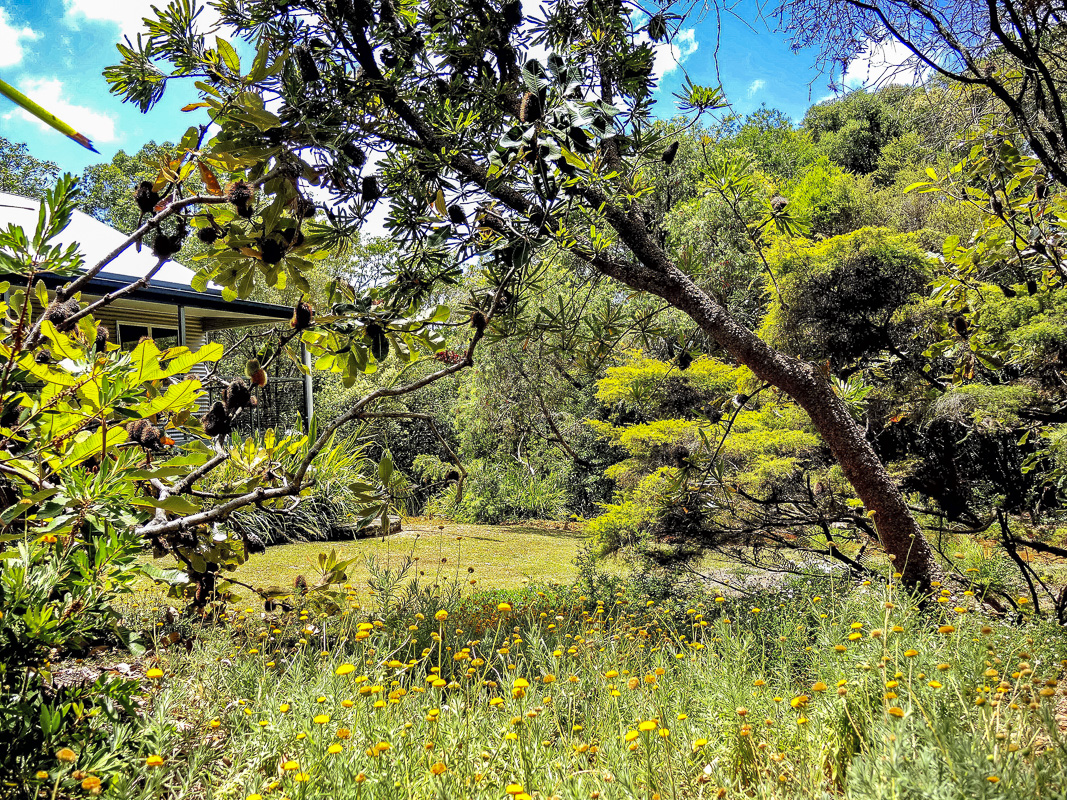
Sunshine Coast hinterland garden – typical of many in Queensland where there is substantial overhead tree canopy and many areas for shade gardens.
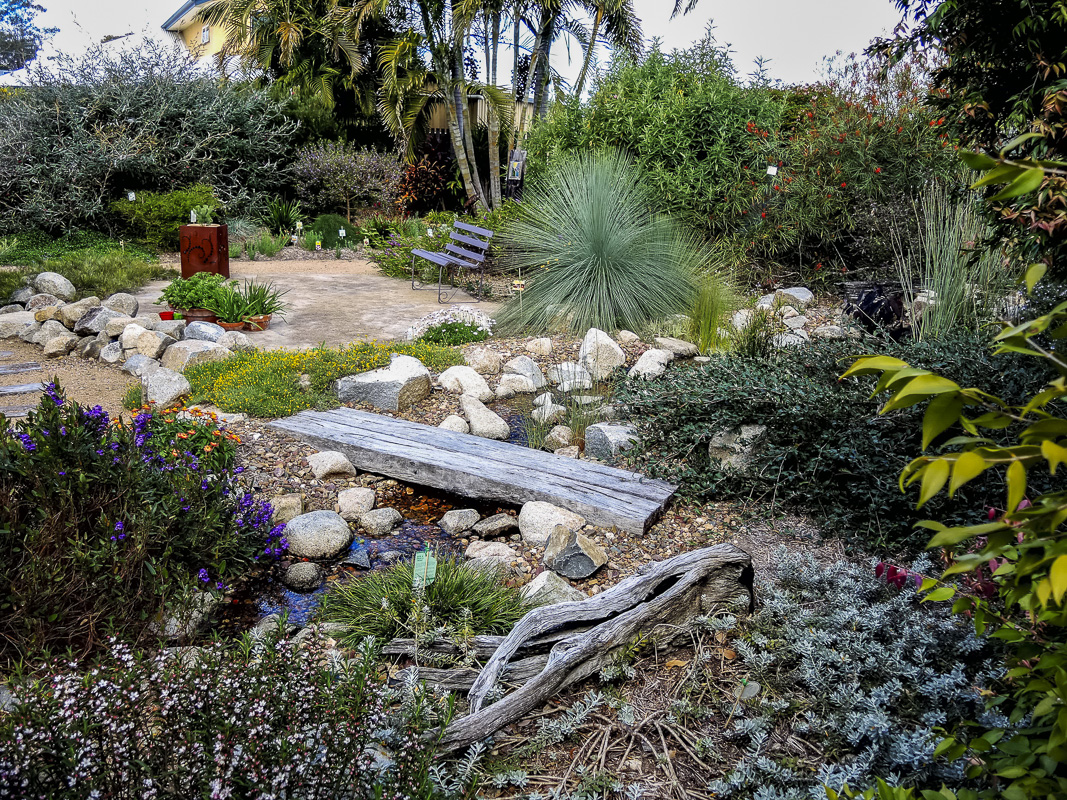
Garden in Gympie Qld – takes advantage of a southern aspect behind a two storey house to create a shaded garden and waterway.
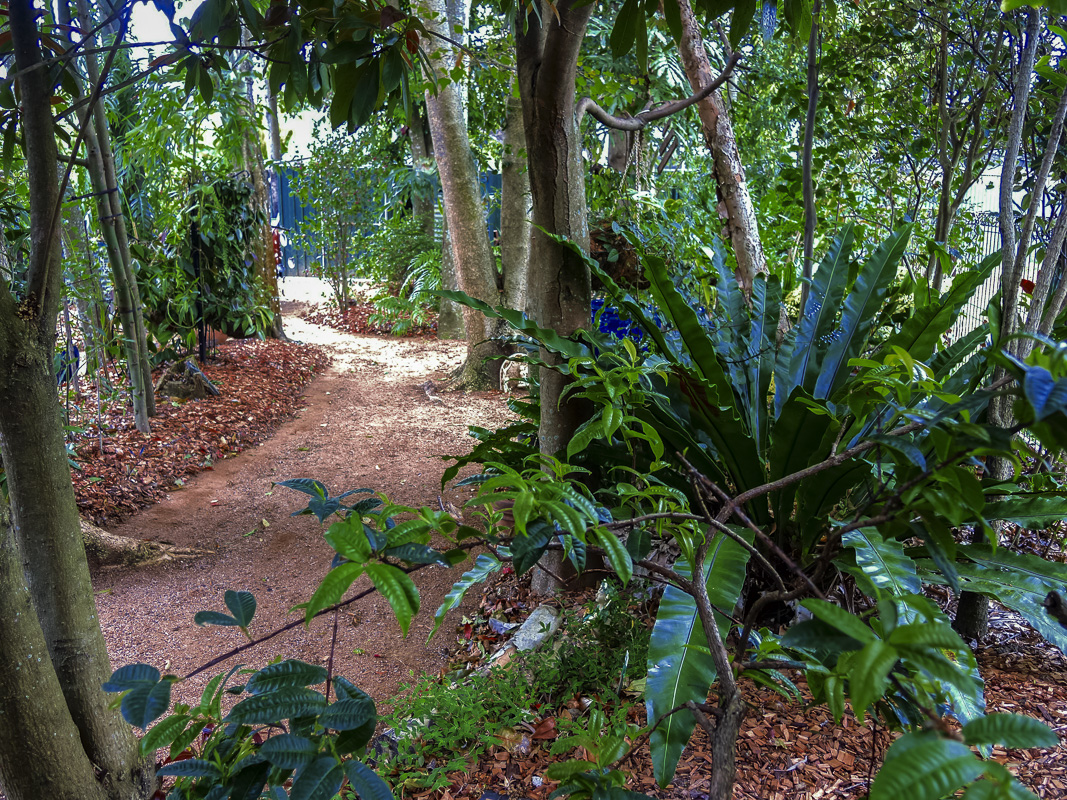
Carol Guard garden in Shorncliffe Qld – rainforest established over many years where multiple trunks and tree canopy protect the diverse understory species collection
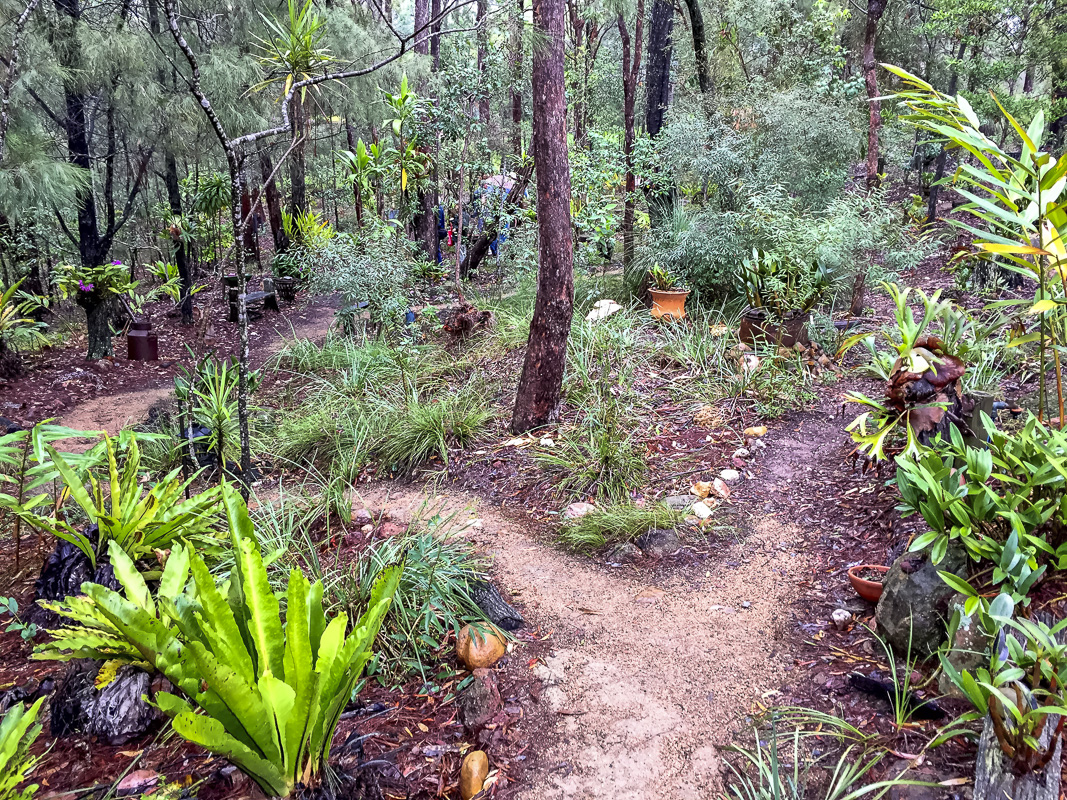
George Smith garden Warner Qld – uses the existing forest canopy to shade and protect an extensive collection of rainforest understory
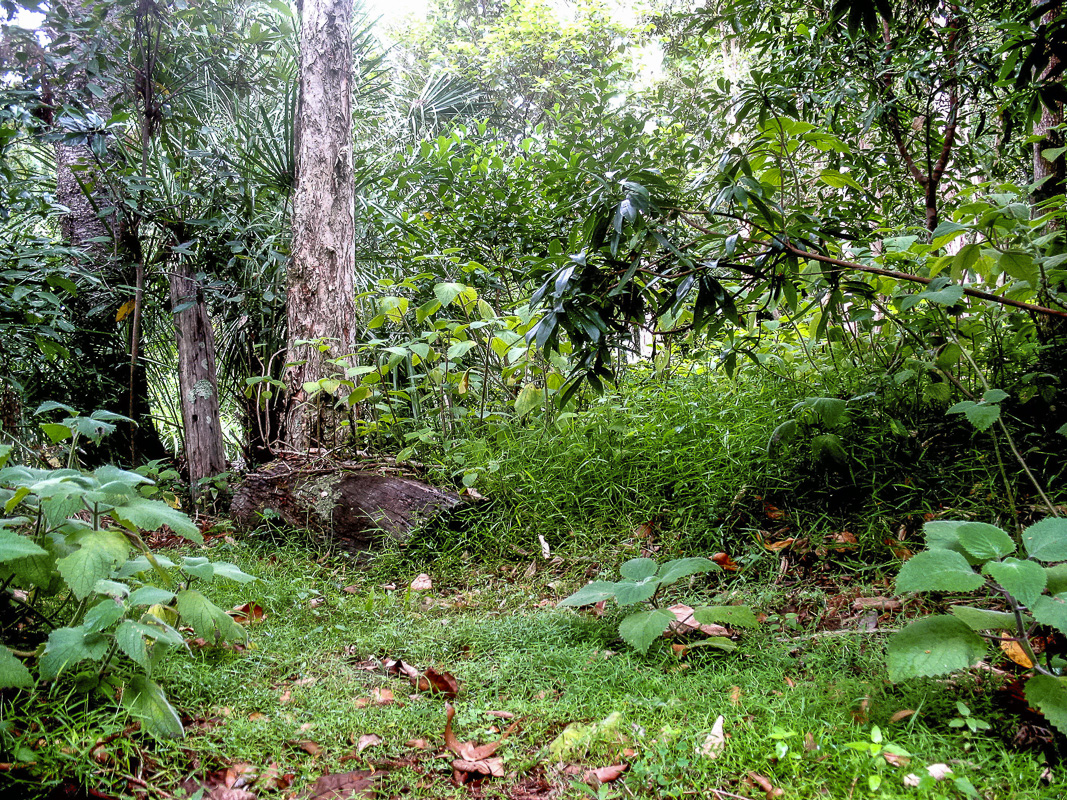
My previous acreage garden Whiteside Qld – grasses, covers, tufts, fern and small shrubs establish readily under a canopy of foliage
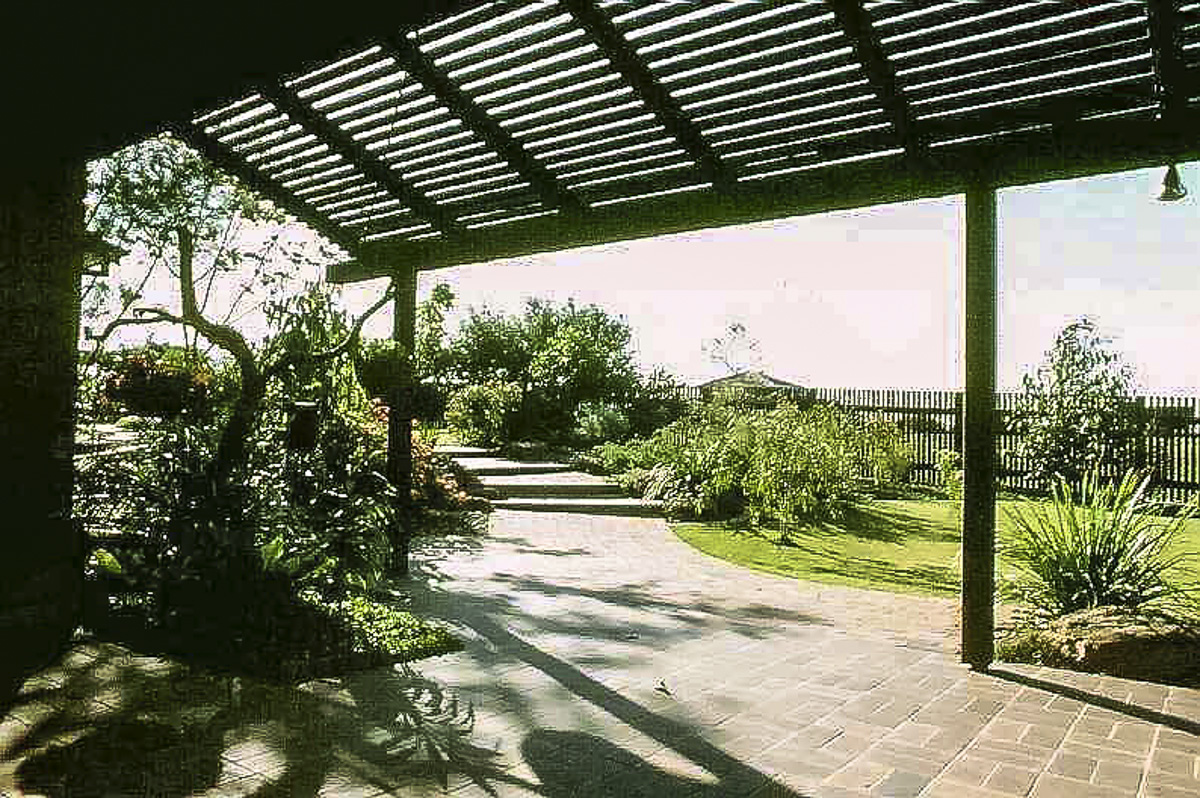
Brisbane garden – specially designed veranda and pergola structures imitate a natural foliage canopy. They control the degree of sun and shade needed for the plant collection
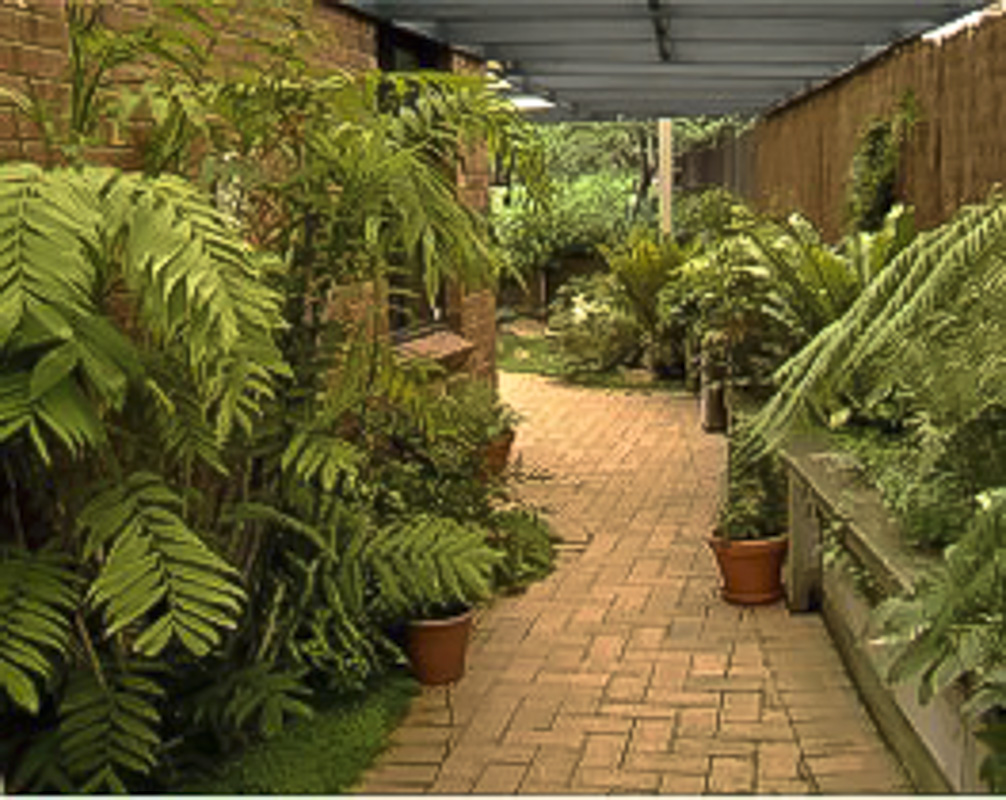
Bush Houses in Brisbane – simply constructed between house and side fence to provide sheltered conditions for collections of shade tolerant plants
Victorian gardens
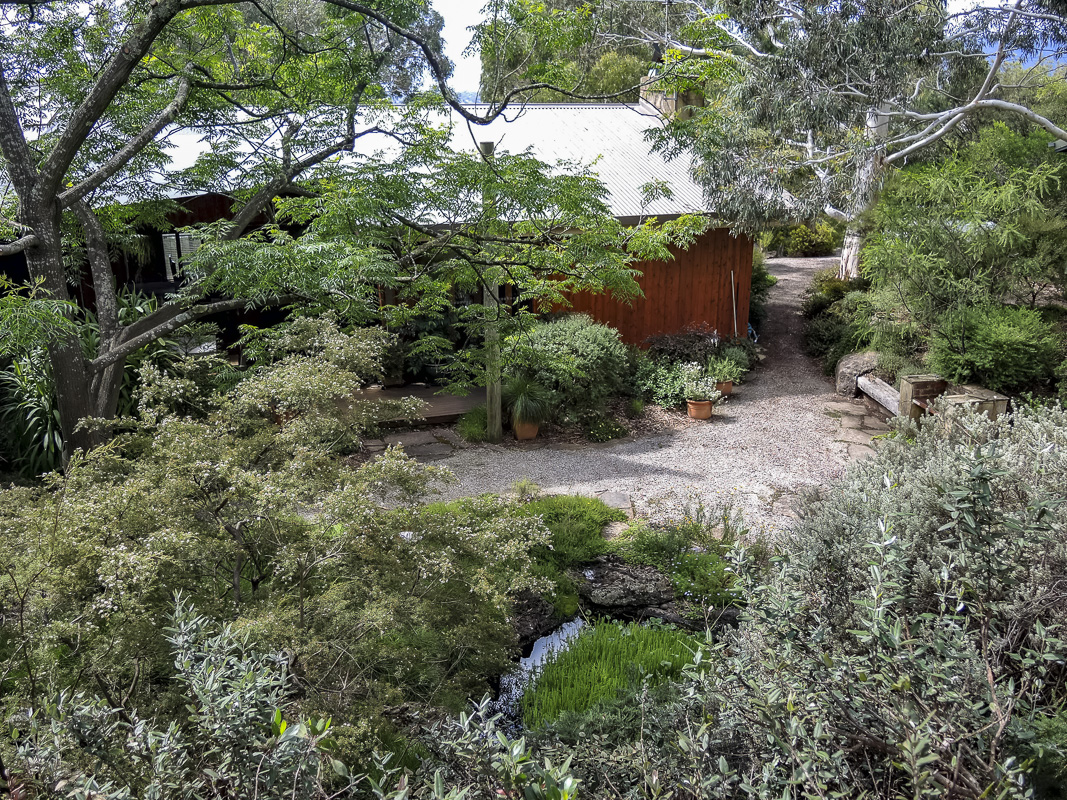
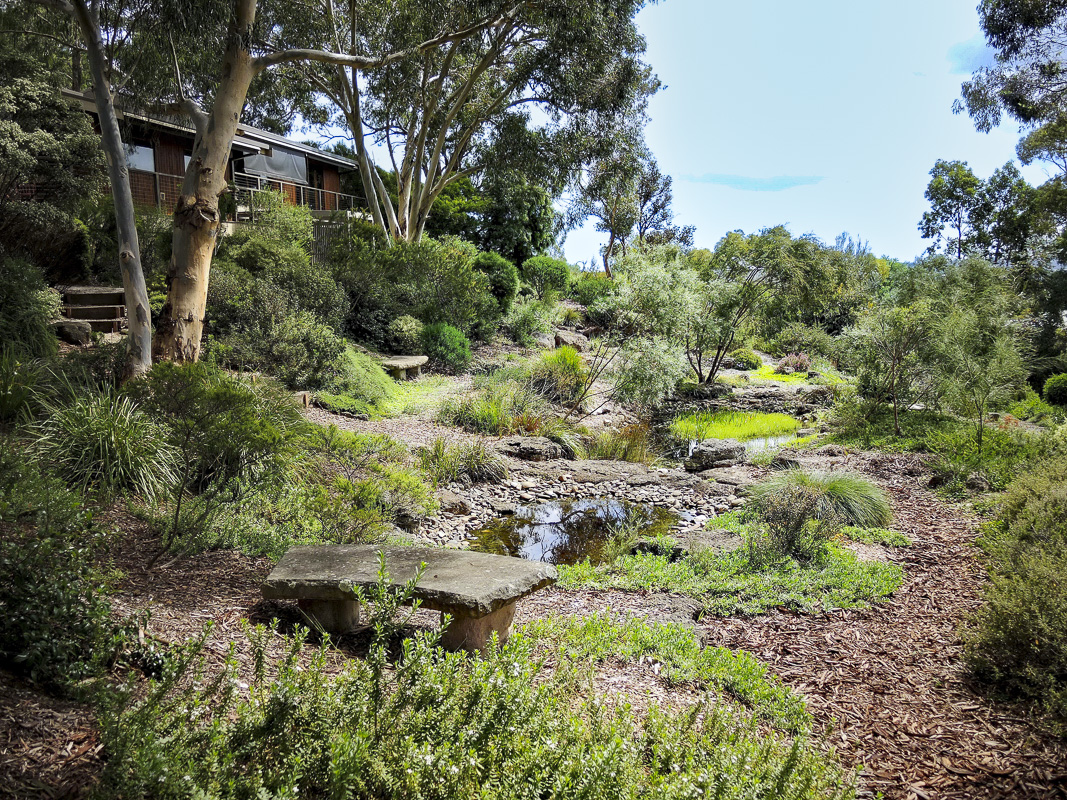
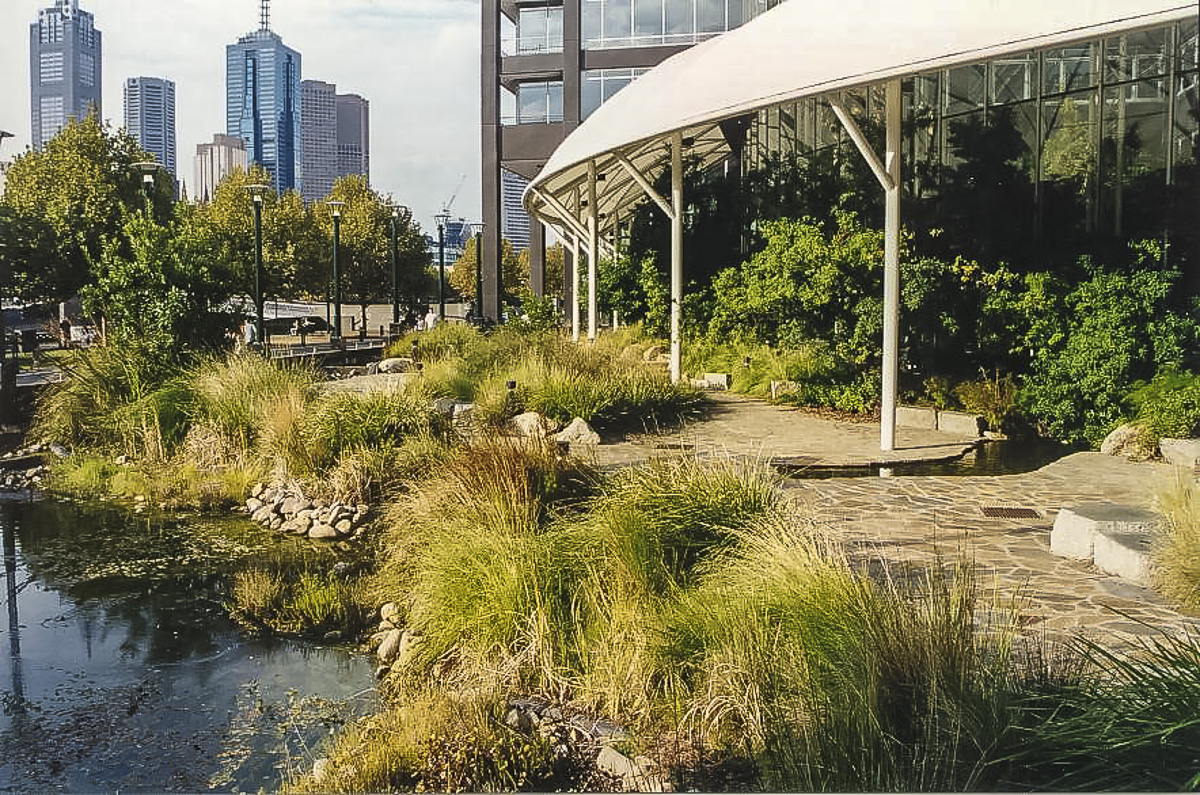
Garden in downtown Melbourne – inspiration from a traditional veranda, in a contemporary urban courtyard garden. Utilizes both sun and shade for species diversity.

Pam Yarra garden in Melbourne – uses a high discontinuous tree canopy to provide shade but also allow pools of sunlight to enhance garden species massed together

Bev Fox garden, Melbourne – uses a high canopy to provide shade, but is discontinuous. This allows several pools of sunlight to enhance collections of special garden species
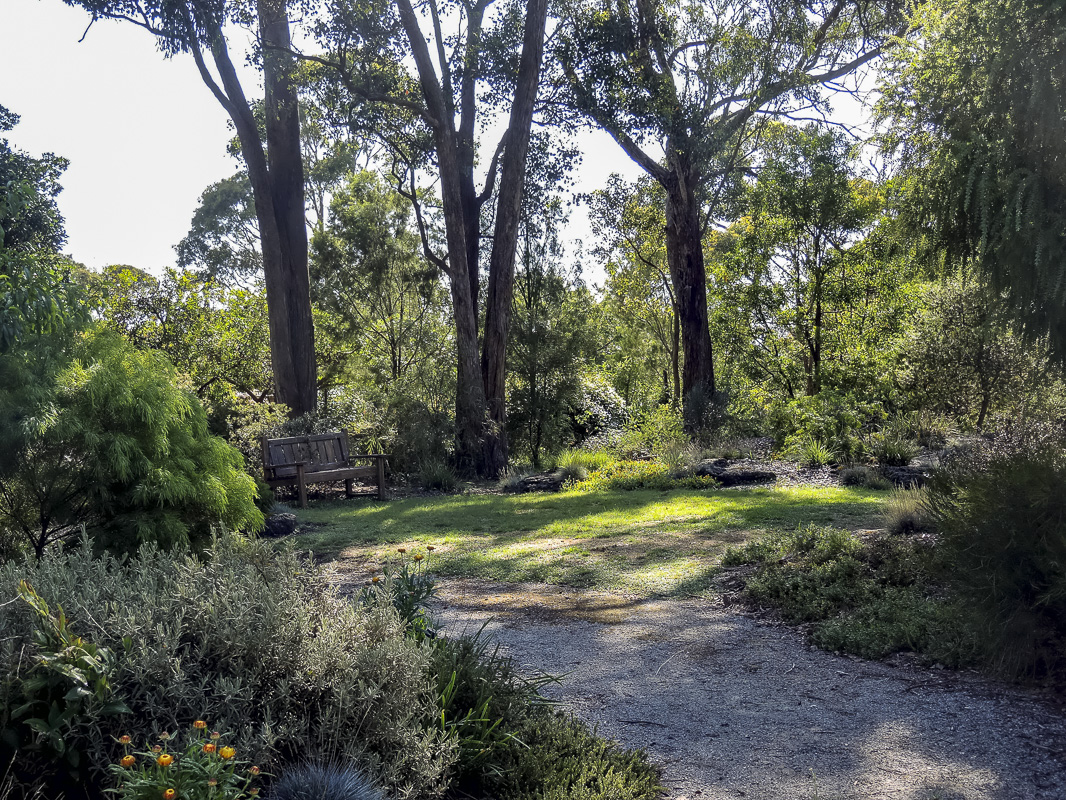
Bev & John Hanson garden in Melbourne – uses a high tree canopy to provide shade, but is discontinuous. Allows pools of sunlight to enhance the garden views
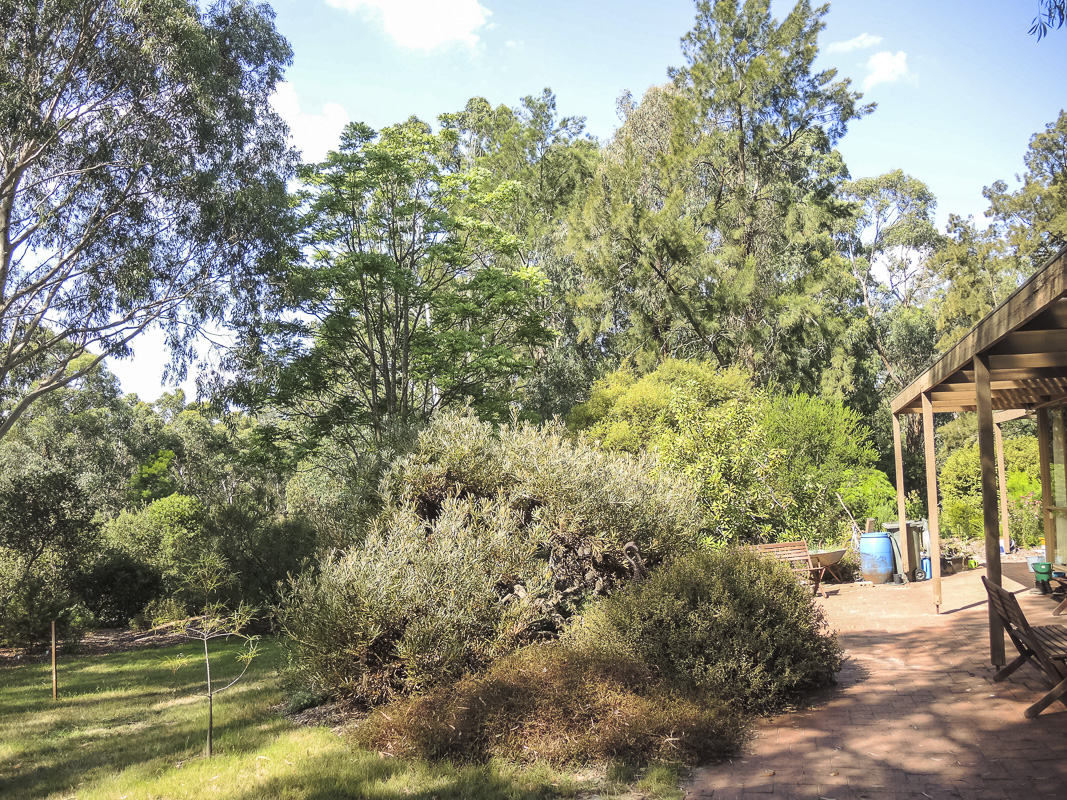
Kawarra garden in Melbourne – illustrates firewise design with the forest canopy kept well away from structures. But admitting full sun for plants with colour around the house
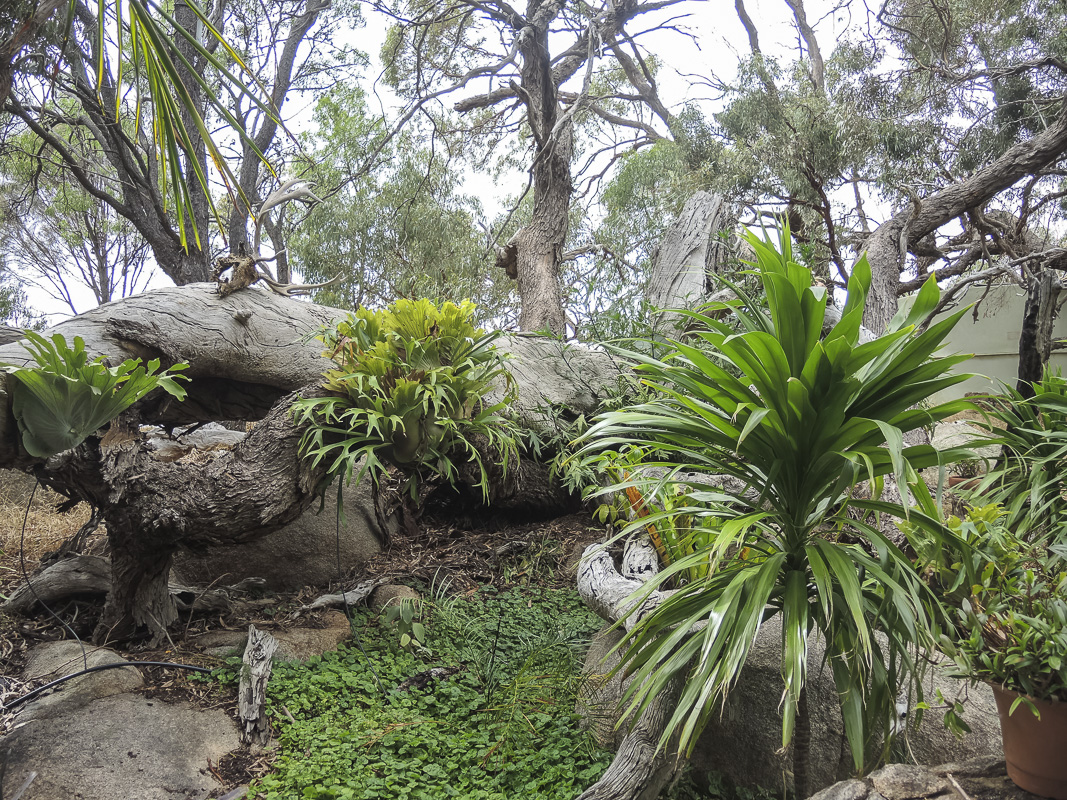
Marriott garden in the Grampians – surprisingly, has used a canopy of trees to protect and establish shade tolerant rainforest species in a unique environment
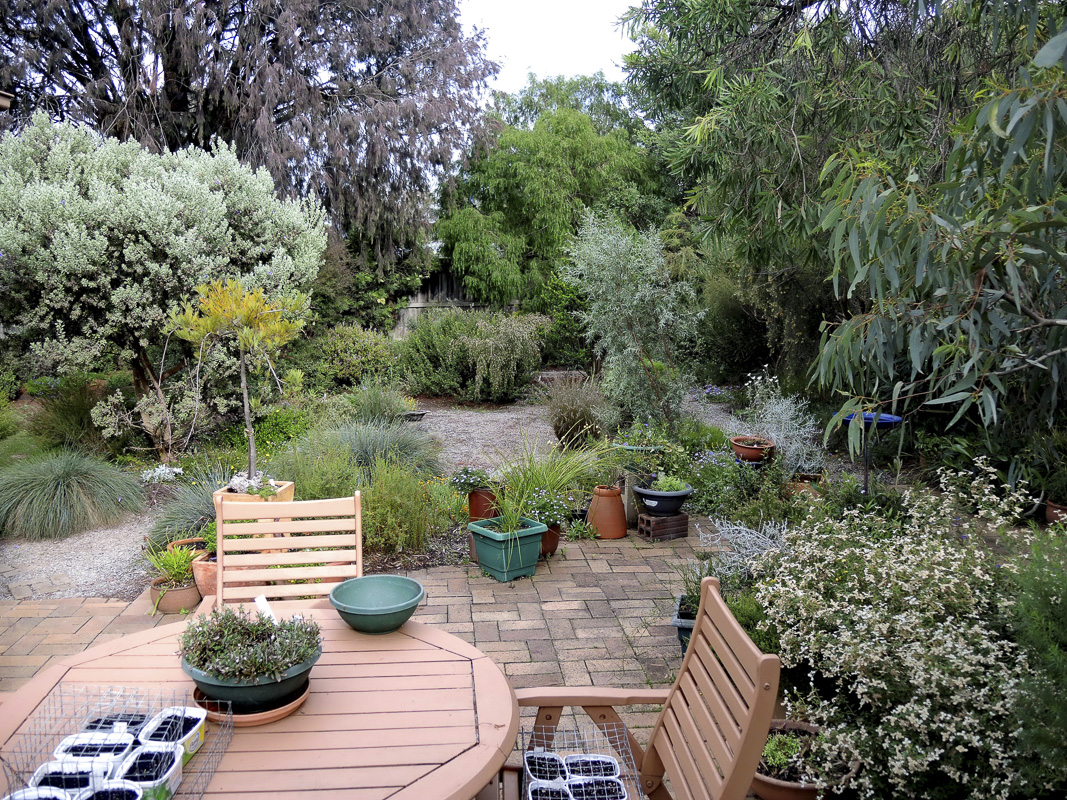
Schauman small garden in Melbourne – has few trees but expansive open sunny areas around the house to maximise flower display
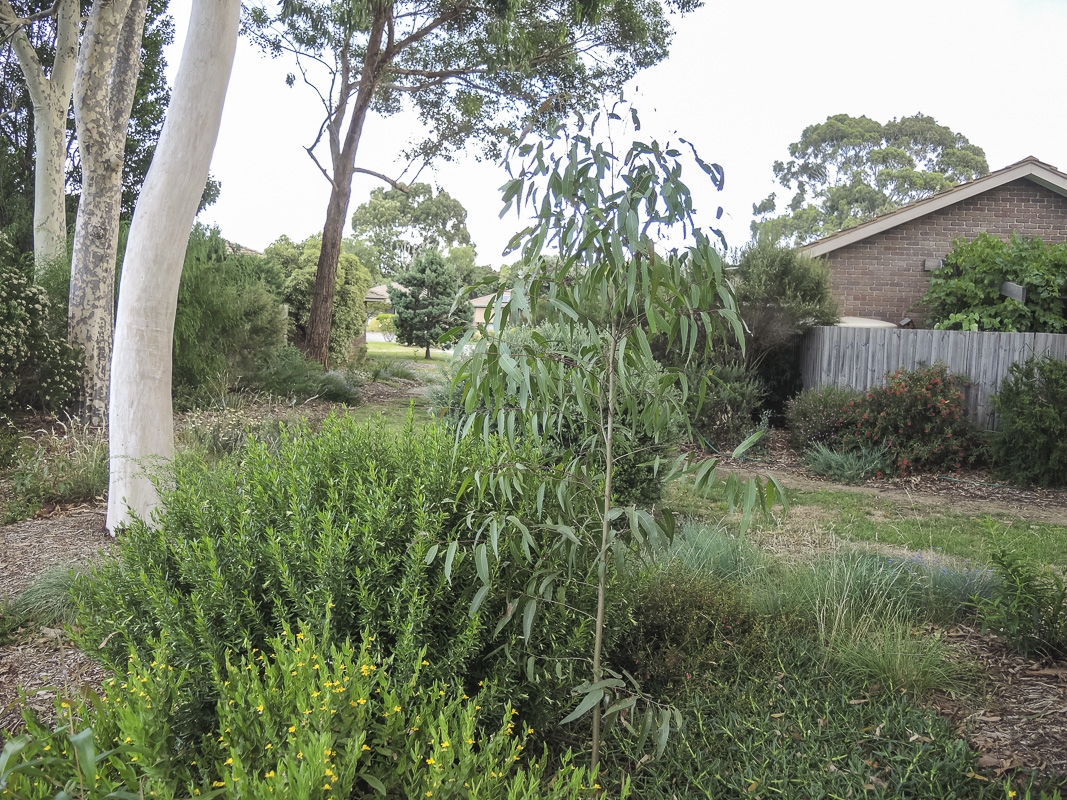
Nicky Zanen garden in Melbourne – visually incorporates mature shade trees to provide drama as well as shade. Enhances the garden species selection. Image Nicky Zanen
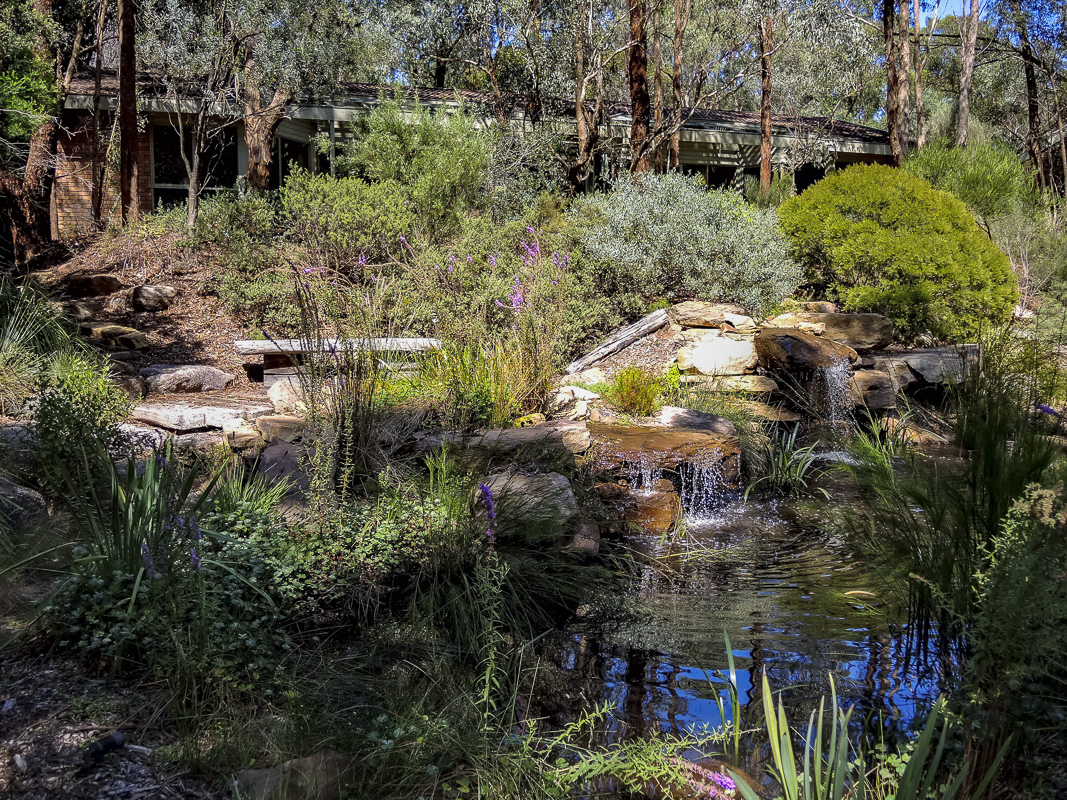
Aitchison & Guymer garden in Melbourne – set in an open forest providing a natural shade canopy. This opens up to admit sum over the waterway
Western Australian gardens
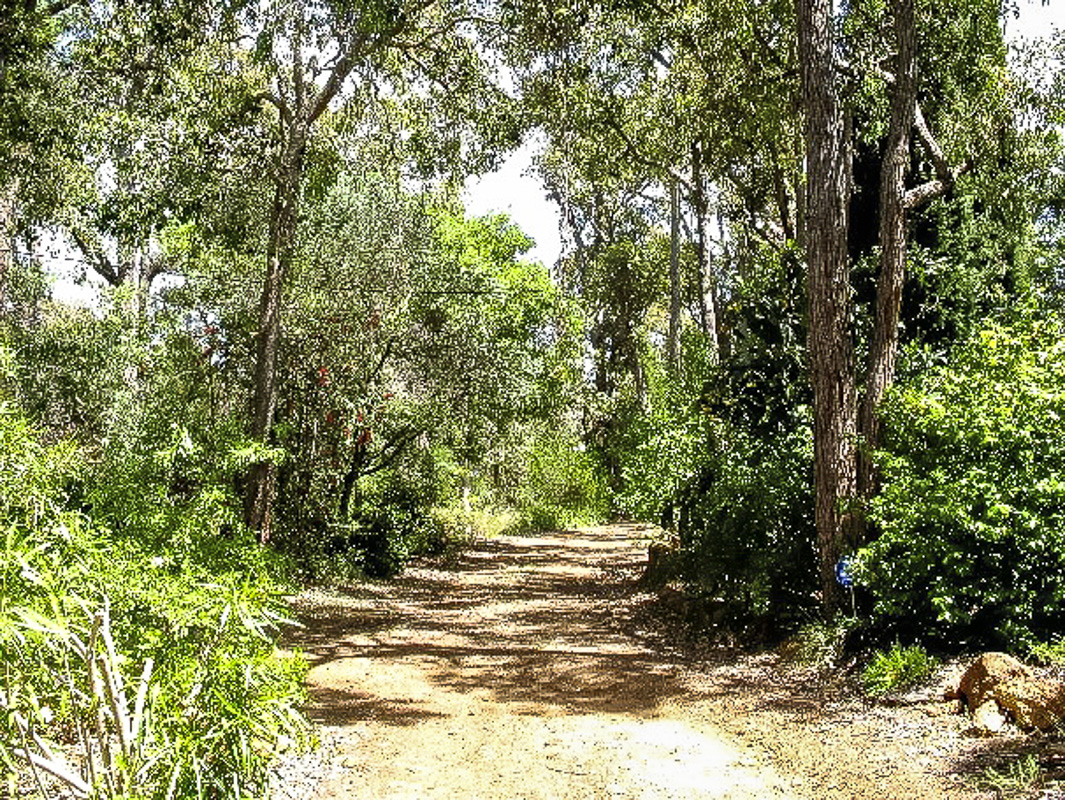
Garden in the Darling Ranges WA – where the tree canopy provides shade and protection for lush understory screening gardens
Northern Territory gardens
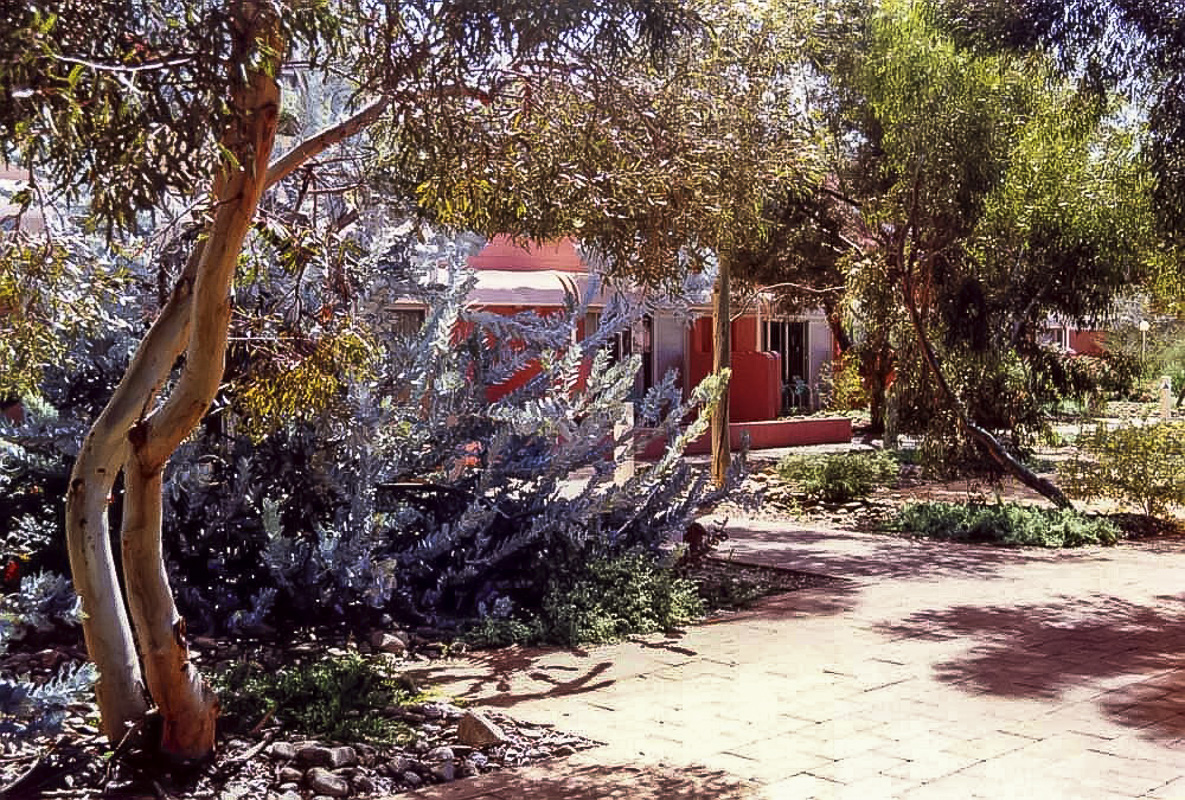
Yulara village at Uluru – has developed shaded gardens under the arid tree species. This creates a uniquely Australian outback shade garden
Australian Capital Territory gardens

Ben & Ros Walcott extensive Canberra garden – has evergreen and deciduous tree shade, but primarily open sunny areas around the house to maximise flower display
For more information about native plants in your state, contact your regional society.
 Australian Native Plants Society (Australia)
Australian Native Plants Society (Australia)